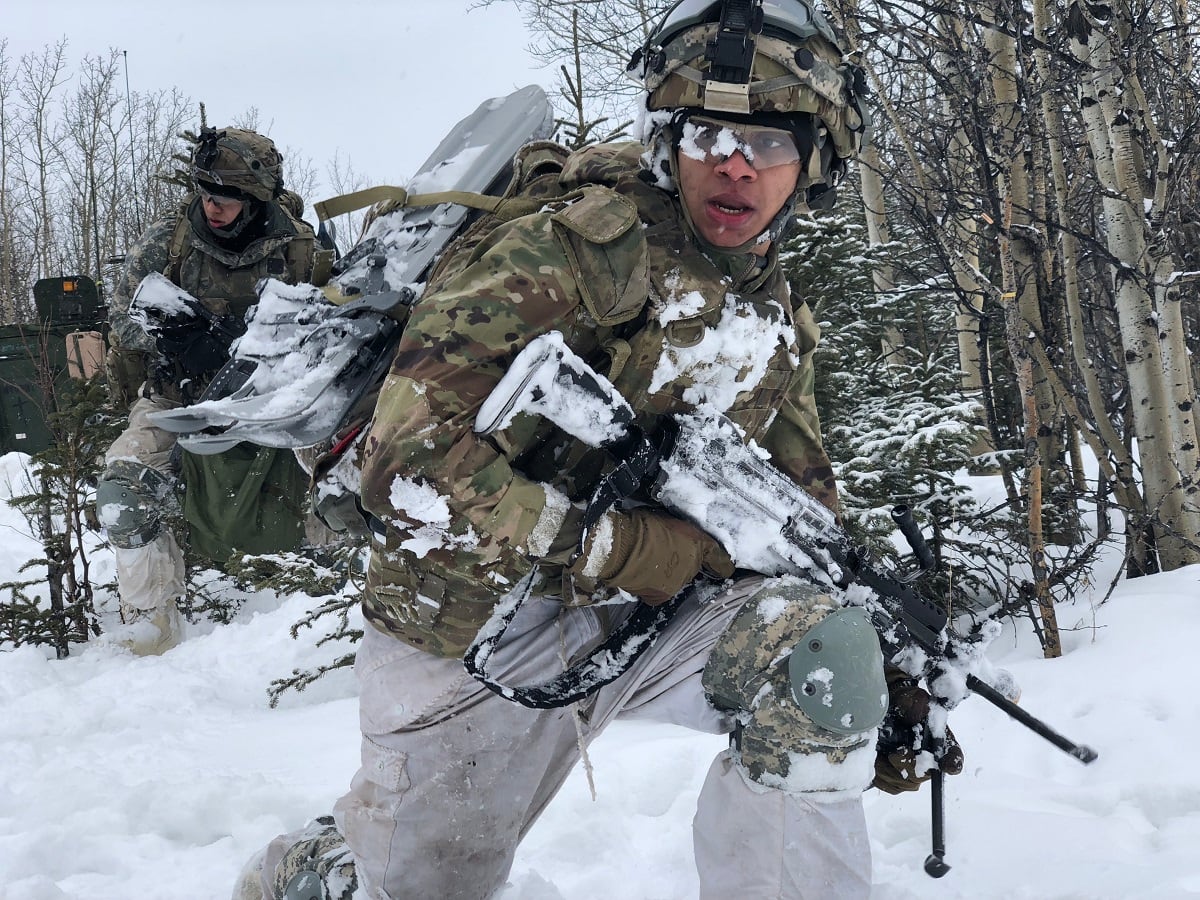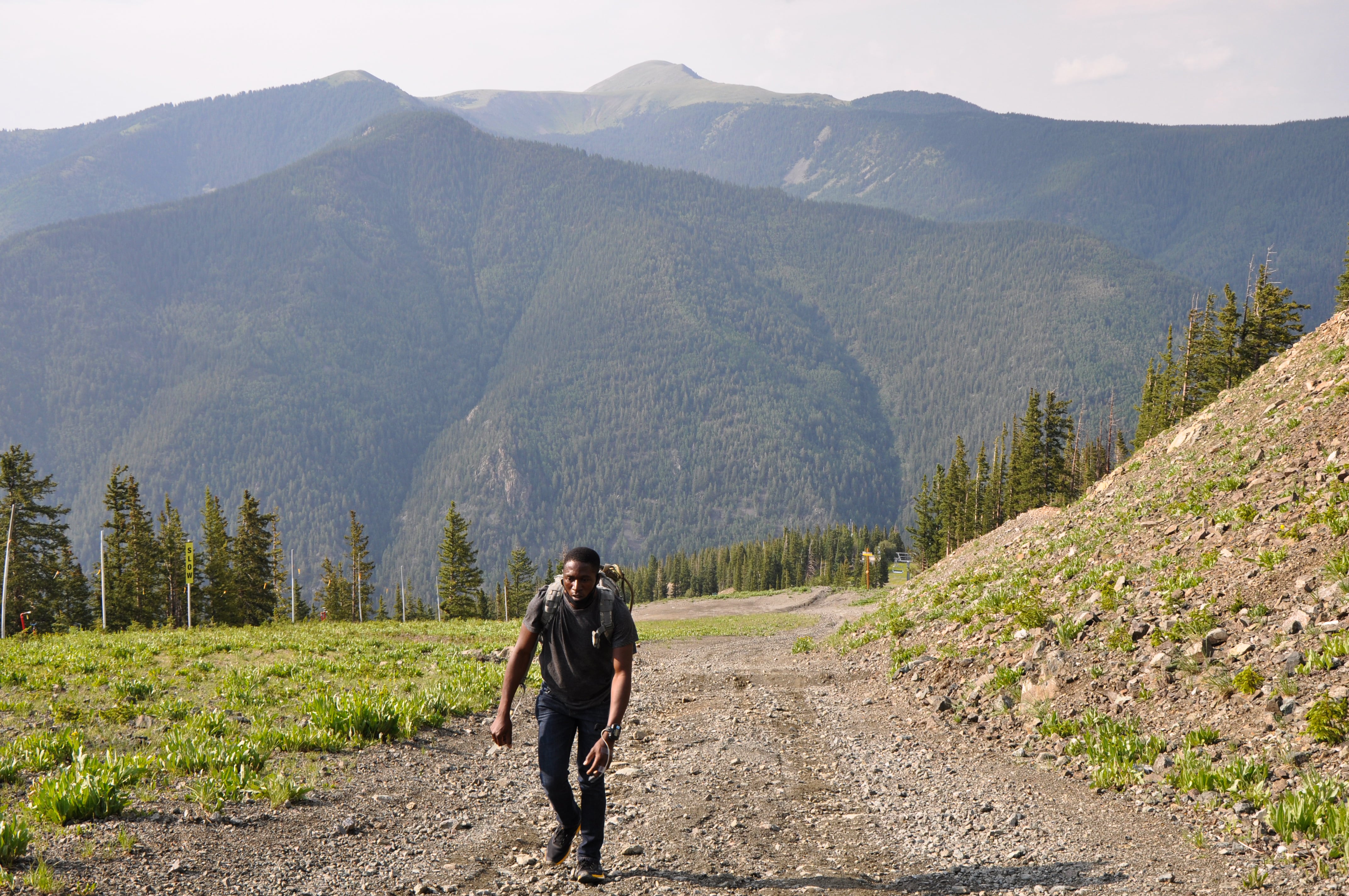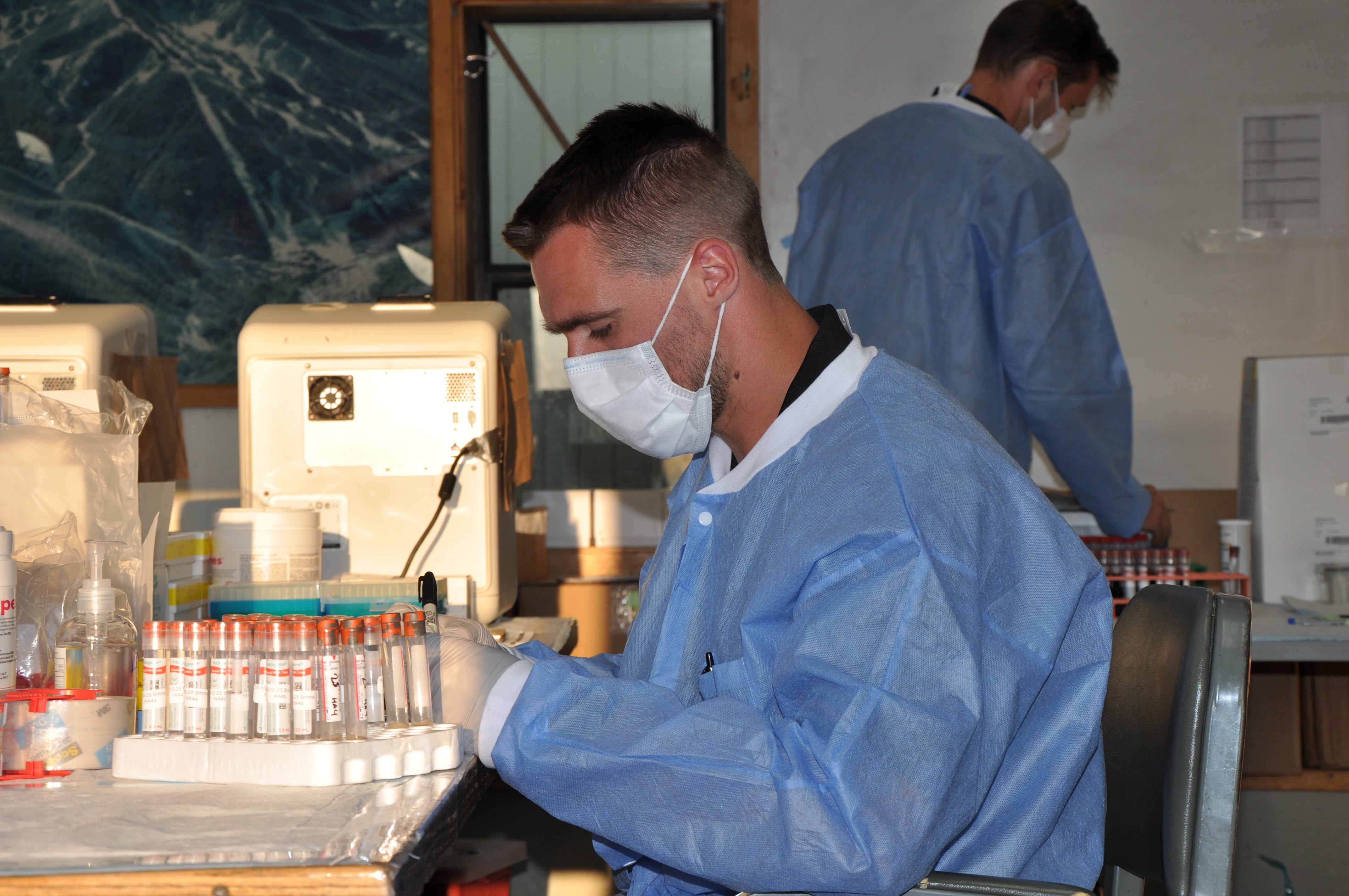Many soldiers who deployed to Afghanistan over the past two decades spent a chunk of their time hitting high altitudes where even breathing can be a struggle.
If land warfare in parts of Asia, Europe and the Arctic are on the horizon, troops may need to not only function, but fight at altitudes previously only serious mountaineers reached.
For decades, the Army has studied the effects of high-altitude, limited oxygen environments — how to detect, prevent and even predict how altitude might affect one soldier or another. Until now, knowledge about what’s happening to people at high altitudes has relied heavily on self-reporting and questionnaires.
That’s not good enough.
Mostly because people lie, especially to themselves about how the environment is affecting them and especially when they’re “tough” soldiers who don’t want to admit anything affects them physically.
RELATED

But a new Army tool — the Acute Mountain Sickness-alert — may prove to be the first algorithm to successfully predict AMS risk in real-time.
And the tool should be transitioned to the U.S. Army Medical Materiel Development Activity at the end of 2022.
The Army’s Research Institute of Environmental Medicine took 41 soldiers from the 509th Clearance Company, 5th Engineer Battalion, out of Fort Leonard Wood, Missouri, to fighting altitude this past summer in Taos, New Mexico.
That trip was more than a nice mountain view-seeking selfie opportunity. Scientists used the trip to test how effectively they could predict who would get AMS.
AMS can debilitate a person for up to 72 hours — impairing their thinking, plaguing them with nausea, headaches, fatigue, poor sleep and shortness of breath — which would render them ineffective or even a liability on a high-altitude mission.
Mountaineers and even soldiers from northern-based units, work through this by acclimatizing over days or weeks and living in the environment. That might mean climbing up a few thousand feet then sleeping slightly lower. They’d follow that process, “two steps forward, one step back,” until soldiers reach the fighting area.

That’s nice, but not feasible for a heliborne mission from ship to shore to mountain, or from low-lying bases to high-altitude combat zones.
Another way they work through this is to “pre-medicate” soldiers with certain drugs.
But those drugs have side effects and only reduced symptoms in about a quarter or third of those who take it.
Another altitude crapshoot.
And it’s not just a few people who face this challenge. About half to as many as 90 percent of unacclimatized troops will experience some level of AMS while ascending to a high altitude, said Dr. Beth Beidleman, a research physiologist and the study’s principal investigator.
Beidleman has been working on altitude problems for the Army for three decades and spoke with Army Times recently about current work and new advances.
It’s frustrating for commanders because three people at 12,000 feet above sea level or higher can show vastly different reactions.
Person A might be completely incapacitated, while person B has a minor headache, but can function. Meanwhile, person C is shooting baskets and running around like they’re hanging out at the beach, she said.
“There’s a huge individual variability in the likelihood of experiencing AMS,” she said.
And until now, there wasn’t a clear way to know who would be affected in what way.
After this past summer’s study, she said they’ve validated that the AMS-alert tool can identify a high-risk person with an 83 percent accuracy.
The ability goes beyond the comfort and care of individual soldiers. Logistics, for example, can be adjusted. Planners can take fewer oxygen bottles if they have a solid predictive tool to know they don’t need to pack multiple bottles for each soldier, she said.
“This is kind of like personalized medicine,” Beidleman said.
ARIEM does have a research facility on Pikes Peak, Colorado, at 14,000 feet. But many military missions, especially in Afghanistan, took place at between 12,000 and 14,000 feet, she said.
The Taos Ski Valley fell right in that sweet spot.

Being able to bring soldiers from a lower altitude, not acclimatized, like those stationed in Alaska, or northern reaches of California and elsewhere, and immediately have them ascend, gave researchers a realistic way to see how rapidly deployed troops might react to a drastic change in oxygen levels.
There are other variables to consider. Sometimes soldiers come in at a higher altitude and work their way down to an objective. That’s another area where the tool might be effective.
Work that Beidleman did with researchers at the Walter Reed Army Institute of Research is also checking the messenger RNA signal (instruction booklet for making proteins) in blood, urine and saliva to find out if there is a genomic component that could more accurately predict which individuals might experience AMS.
Scientists Dr. Rasha Hammamieh and Dr. Aarti Gautam are doing the work at Walter Reed. Dr. Phil Karl, also with ARIEM, is studying gut microbiome in relation to how it affects performance, and Dr. Mark Buller is working on physiological monitoring, Beidleman said.
And the Army’s not alone here.
Dr. Camilla Mauzy, with the Air Force Research Laboratory, is looking at the breakdown products of protein, fat and carbohydrates metabolism to predict individual susceptibility to AMS more accurately.
An early version of AMS-alert was tested with a group of 16 people. But the 2021 summer study had 41 soldiers, a larger sample size from which to gather data.
“We can’t just take eight to 10 people and say, ‘this really works.’ We need to study large populations of individuals,” Beidleman said.
Beidleman and her team are sifting through the reams of data they collected on their summer test, expecting to further validate and refine the AMS-alert tool.
Todd South has written about crime, courts, government and the military for multiple publications since 2004 and was named a 2014 Pulitzer finalist for a co-written project on witness intimidation. Todd is a Marine veteran of the Iraq War.




